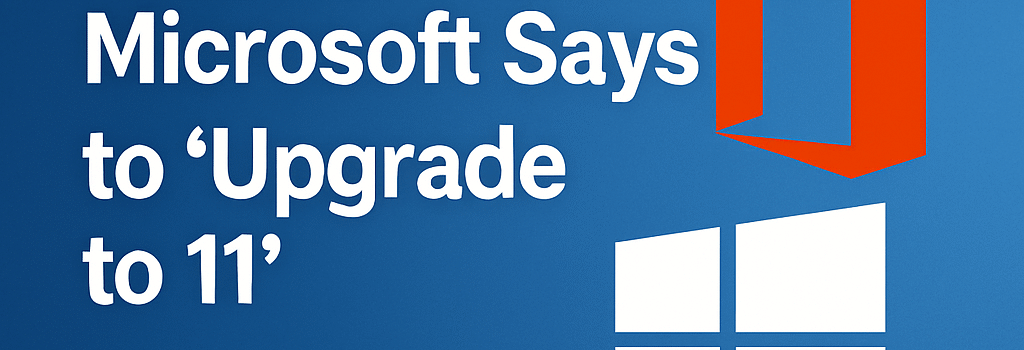Office Issues on Windows 10? Microsoft Says to ‘Upgrade to 11’

Microsoft’s official end-of-support for Windows 10 is October 14, 2025, but in practice the company is already throttling new features and prioritizing its latest OS. While Windows 10 will continue to receive security updates, any new feature rollouts for Office and Microsoft 365 apps on that platform will be phased out over the next 18–24 months, driving users toward Windows 11 or cloud-hosted alternatives.
Support Timeline: From Full Updates to Security-Only Patches
Microsoft published an updated support document clarifying when Windows 10 PCs will no longer receive new feature updates for continuously updated Microsoft 365 apps. The key milestones are:
- October 14, 2025: End of standard support for Windows 10 Home and Pro; no further cumulative Windows 10 feature or quality updates.
- August 2026: Home users of Microsoft 365 Apps on Windows 10 stop receiving new features; only security fixes and bug patches.
- October 2026–January 2027: Enterprise and Education editions of Microsoft 365 Apps on Windows 10 exit the new-features channel (dates vary by version: Business/Enterprise, LTSC builds).
- December 31, 2028: End of security-only support for Office 2021, Office 2024, and Microsoft 365 Apps on Windows 10 (including security updates for Defender signatures via the Microsoft Update catalog).
Extended Security Updates (ESU) for Windows 10
For organizations unable to migrate immediately, Microsoft offers Extended Security Updates (ESU) for Windows 10 22H2—its final feature update. Technical requirements and costs:
- Eligibility: Devices must be running Windows 10 Pro, Enterprise, or Education 22H2 (build 19045 or later).
- Term: Up to three annual ESU packages, delivered as cumulative KBs (e.g., KB5030366 for 2025 ESU).
- Pricing: Tiered per-device fees: $25 in year 1, $50 in year 2, and $100 in year 3 for Enterprise/Education; $30 or 1,000 Rewards points for Home/Pro (requires Microsoft Account).
- Delivery: Via Windows Update for Business or Windows Server Update Services (WSUS), with dynamic installation based on ESU activation key.
Office and Microsoft 365 App Roadmap on Windows 10
Both subscription and perpetual Office clients will see a shift in support scope:
- Microsoft 365 Apps (Subscription): Monthly Channel, Semi-Annual Channel, and Long Term Servicing Channel (LTSC) builds will stop receiving feature updates as per the timeline above. Security patches continue through 2028.
- Office 2021/Office 2024 (Perpetual): Mainstream support for perpetual SKUs ends in 2026; extended security fixes continue until 2028 but no new feature rollouts.
- Platform-specific fixes: If a bug or performance issue is exclusive to Windows 10 and not reproducible on Windows 11, official guidance recommends upgrading. Windows 10 will receive only “troubleshooting assistance,” with no new code-level patches for Windows 10–specific bugs.
Hardware Implications and Upgrade Considerations
Windows 11 introduces hardware-enforced security and virtualization features that are rarely available or entirely unsupported on older hardware. Key requirements:
- Processor: 8th Gen Intel Core or AMD Ryzen 2000 series and newer, plus on-die TPM 2.0.
- Memory and Storage: Minimum 4 GB RAM, 64 GB SSD; recommended 8 GB+ RAM, NVMe SSD.
- Firmware: UEFI with Secure Boot, virtualization-based security (VBS) and hypervisor-protected code integrity (HVCI) optional but recommended.
- PC Health Check: Microsoft’s tool provides a pass/fail report, with guidance on BIOS settings or firmware updates to meet requirements.
Expert Perspectives on Transition Strategies
Industry analysts emphasize a phased migration:
“Enterprises should adopt a ring-based deployment using tools like Microsoft Endpoint Manager to pilot Windows 11, ensuring compatibility with line-of-business applications before broad rollout,” says Laura Chen, Senior Analyst at Forrester Research.
Gartner recommends leveraging Windows Autopilot for zero-touch provisioning and co-management via System Center Configuration Manager (SCCM) and Intune to minimize endpoint disruption.
Security and Compliance Impact
Windows 11’s built-in security features align with frameworks like NIST SP 800-207 (Zero Trust) and CIS Benchmarks. With Windows 10 entering security-only mode, organizations should:
- Review compliance policies to ensure legacy devices with ESU remain gap-free in vulnerability management.
- Use Microsoft Defender Vulnerability Management and Endpoint Detection and Response (EDR) to cover unsupported feature vectors.
- Plan decommission or re-image cycles to retire devices before ESU expiry, mitigating risk in regulated industries.
Leveraging Cloud Services for Legacy Support
For workloads that cannot transition to Windows 11, cloud-based desktops and virtualization offer an interim solution:
- Azure Virtual Desktop: Stream Windows 10 or custom images from Azure, benefiting from Microsoft-managed infrastructure and security patches.
- Windows 365 Cloud PC: Persistent cloud PC instances that run Windows 10 Enterprise with full Office compatibility, offloading hardware ownership.
- Third-Party Virtualization: Solutions like Citrix Virtual Apps and Desktops or VMware Horizon maintain legacy application support on modern endpoints.
Recommendations for IT Administrators
- Audit all Windows 10 devices and Office versions using tools like Microsoft SCCM or Azure Log Analytics.
- Segment users: Identify power-user workstations versus knowledge-worker laptops to target upgrade waves.
- Validate mission-critical applications on Windows 11 via compatibility testing (e.g., Application Compatibility Toolkit, Windows 11 Assessment).
- Train helpdesk staff on common upgrade issues: TPM activation, BitLocker key escrow, and recovery processes.
- Leverage Windows Update for Business deferrals to control feature rollouts and coordinate with patch cycles.
Bottom Line: Microsoft is signaling that its long-term vision centers on Windows 11 and Azure services. While Windows 10 remains secure through 2028 under ESU, new functionality—and full technical support—will be reserved for Windows 11 and cloud-hosted experiences. Organizations should accelerate their Windows 11 migration plans or adopt hybrid cloud strategies to avoid falling behind in security, features, and compliance.